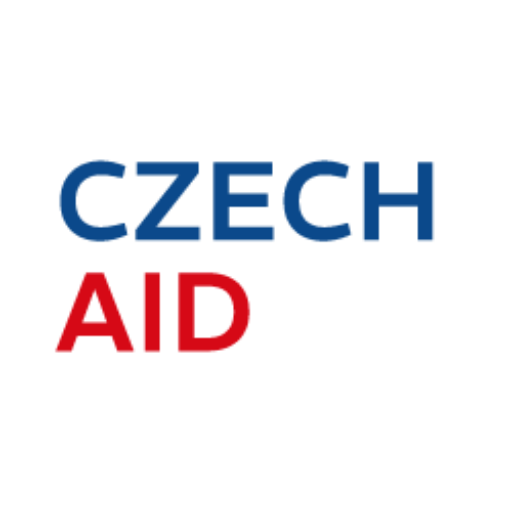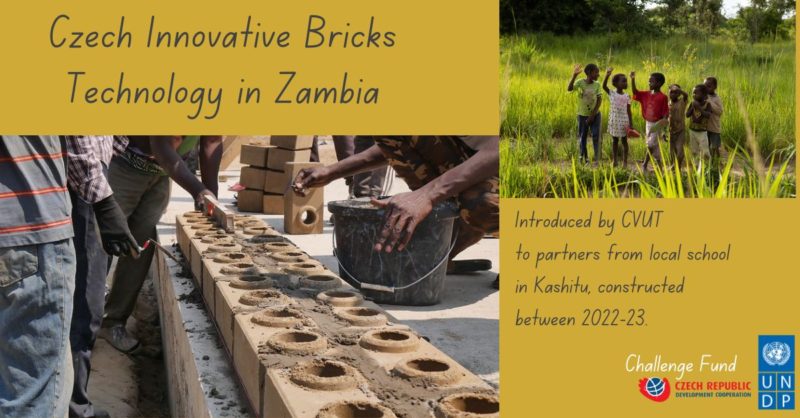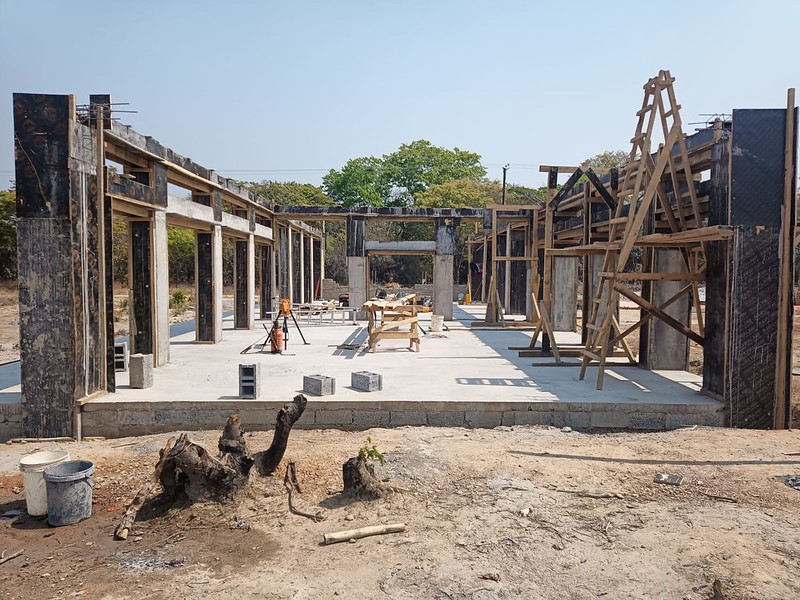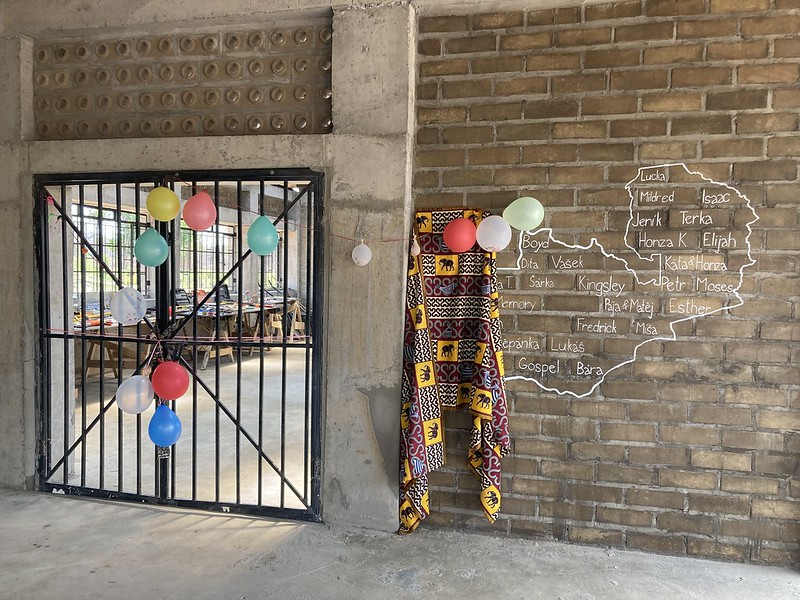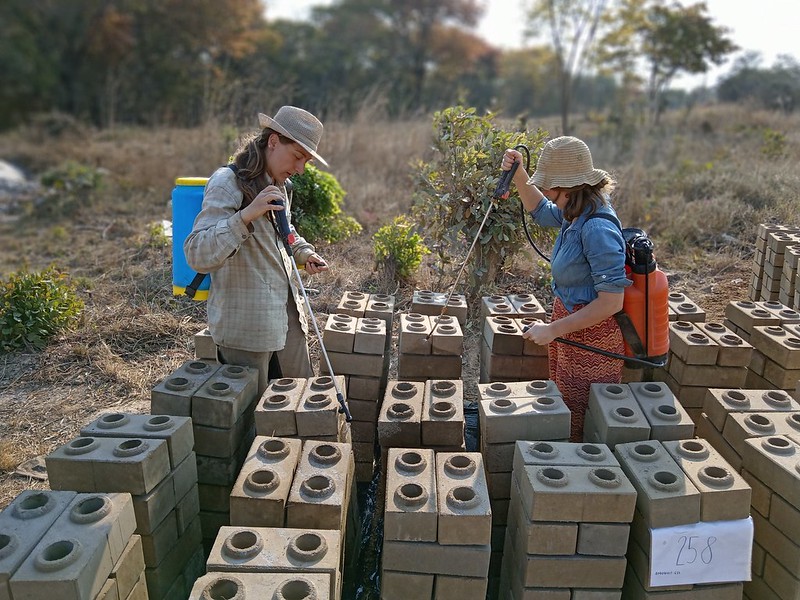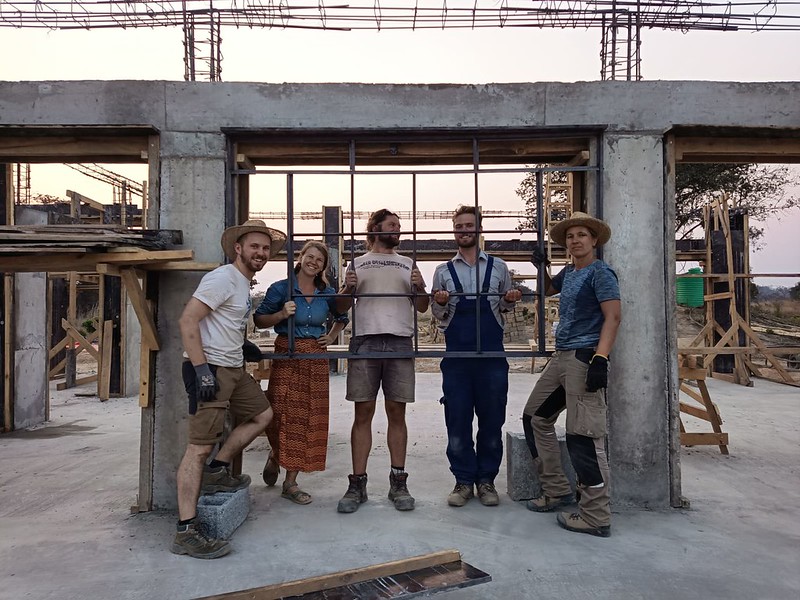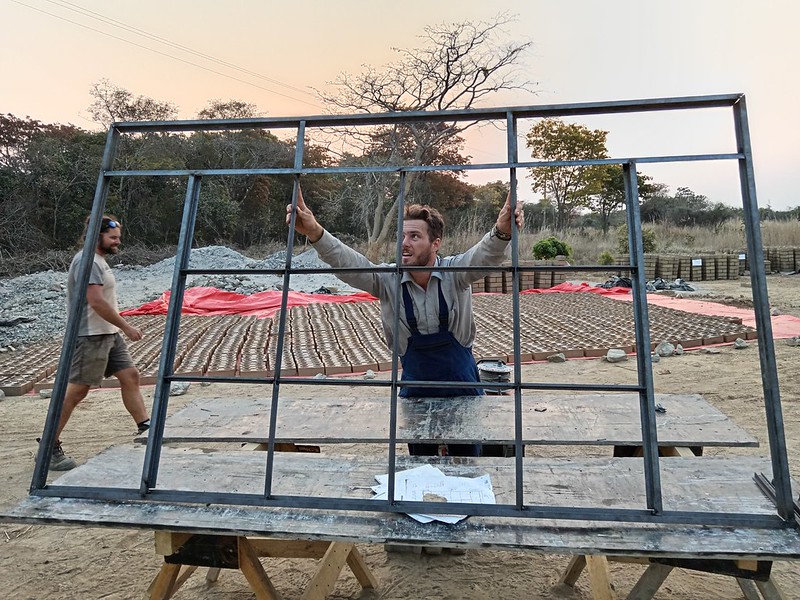Czech technical university constructs the first building of the secondary school in Kashitu
In the presence of Czech Ambassador Pavel Procházka, a workshop building was opened in Kashitu, Zambia. The workshop, built over three months by Czech civil engineers and architects with the help of local volunteers, will serve as a base for the construction of a secondary school. An innovative building technology using interlocking unfired bricks stabilized with cement was used and taught to local volunteers. This technology can be further utilized on-site to improve the construction of both residential buildings and the planned secondary school.
The workshop, the first building of the school for 250 students, will act as a training center for this new construction technology before the project progresses to the next stage. It is expected to serve as a base of operation for the following construction phases.
The project was implemented in cooperation with the International Center for World Development of CTU, the Czech organization Friends of New Renato, and the Zambian non-profit New Renato Community Society. The Kashitu team, a group of volunteers that implemented the construction, was formed at the first summer school organized by the International Center for World Development of CTU. The construction was made possible thanks to the financial support received through the UNDP Challenge Fund and the contribution of many public donors.
Over 200 locals, including guests, attended the opening ceremony, where representatives from the local community and government officials were also present. Czech Ambassador Pavel Procházka expressed his joy and pride during the ceremony, saying, ‘We have gathered here in the heart of Kashitu to celebrate the result of the cooperation between Czech and Zambian volunteers, representatives of CTU, and the local community of New Renato. The opening of this workshop marks the beginning of an ambitious project to bring a better future for the people of Kashitu.’
The workshop is the initial building of the future high school. With the nearest secondary school located 40 kilometers away, most small local farmers cannot afford to pay their children’s fares or accommodation at more distant schools. Zambia’s District Commissioner for the Office of the President, Francis Hasalamo, also spoke highly of the emerging project during the ceremony. He expressed his gratitude to all the volunteers, especially the Czech ones, and encouraged continued support for the local community in the next phases of construction. Hasalamo emphasized that the high school brings hope for the local population to achieve higher education and self-sufficiency.
Czech-UNDP Partnership talked to Petr Čanda, who was responsible for the project implementation.
- CVUT recently completed a project in Zambia. Could you please briefly explain what was your project about?
Our project, Interlocking Bricks for Kashitu, introduces an innovative construction material of unfired bricks stabilized by cement. This solution addresses the demand for an easy-to-build, affordable, and locally available construction option, originating from the traditionally used technology of earth blocks made by manual brick machines. We took the concept of manually produced blocks and developed a utilized version of the brick-making machines, creating bricks with interlocking features. This results in a more durable, affordable, and easier-to-build construction. The goal of our project was to provide training in the new technology to the local community and construct a workshop building that will operate as a training center for this technology.
- As a university entity, how did you find out about the opportunity to apply for Challenge Fund and how was the process of applying?
The UNDP Challenge Fund is a well-known option among developing aid programs. For our project, we sought a ‘start-up’ kind of funding option, which the Challenge Fund certainly provides. We first learned about it from colleagues at different universities who have been involved in developing countries for some time. We applied with our idea twice, and our project was granted on the second attempt. The admission process is quite simple and straightforward, without any major obstacles. Project supervisors are very helpful and eager to provide consultations.
- How do you look back at the project results now? Did everything work out the way you originally planned or there were many changes throughout the year?
Well, some things didn’t exactly go according to plan. We experienced some major changes in key aspects of our project during implementation. The biggest challenge was a delay in the cargo sent from the Czech Republic. Among the tools and building materials needed for the construction of the workshop building, the most crucial items were two block-making machines, indispensable for implementing the new brick-making procedure. The shipment arrived at the building site almost two months later than it was supposed to. Because of this inconvenience, we had to develop an adapted construction system where the main load-bearing structures were concrete columns and beams. In the end, all the milestones of the project were fulfilled, the building was completed, and we are very happy to finish it on time.
- You have spent a few months in Zambia to oversee the project implementation. What were the main challenges of implementing the project in Zambia and how did you overcome them?
Regardless of the trouble with the shipment delay, we mostly dealt with the time schedule of the project implementation. Our project combined the training aspect with the construction phase, where we didn’t expect to be forced to start building construction without the workers’ training on the block-making machines. We finished the foundation before the block-making machines arrived and continued with brick-making training and manufacturing simultaneously as we developed the formwork for the concrete columns. Due to the limited time, we were forced to hire more workers and speed up the construction process. Another challenge was the time and work management of the local workers. As expected, they were not in line with the European style of work, so we needed to take extra time and effort to be able to complete important milestones in the building construction.
- How was the cooperation with your local partner in Zambia?
Our local partner, the NGO New Renato Community Society, was a significant help in the project development. We have known the people of this organization for quite some time, and their collaboration with their Czech sister NGO, Přátelé New Renato, has lasted for more than 20 years. They managed the local volunteers, selected the right contractor, and were very helpful with the purchase of building materials and finding local workers and craftsmen. They also created a peaceful and safe environment for accommodation and catering for the Czech team of volunteers. The only problem was also with the time management and synchronization of both teams.
- What was the main motivation for local partner/local people to join the project?
I would say that the main motivation for the local people to join this project was the many years of friendship and cooperation that we had developed previously. Local volunteers also saw the opportunity to gain special knowledge in creating interlocking bricks, which could be helpful to the community not only for building the needed infrastructure in the area, like a future secondary school, but also as a way to provide their families with houses constructed using this technology. The local contractor was also quite happy to learn new ways of building with new tools and equipment, which are hardly available in the Zambian countryside.
- What is your plan to ensure that project stays sustainable after this year? Do you plan any follow-up projects using the brick system?
Our project doesn’t end with the construction of the workshop building. Our goal for this year was to construct a workshop building that will be used as the training center for the local community and as the first building of the future secondary school, which is not available for more than 40 km from this locality at the moment. Two block-making machines are now stored and maintained in the new workshop building, and we also provided the local workers with all the needed tools for carpentry, bricklaying, and metal fabrication crafts. We are already planning the next step, which will take place next year. In this phase, we aim to elevate the skills and knowledge of the original ten trained volunteers. We plan to train them not only in brick making but also in brick laying. Our objective is to equip them with the ability to develop the entire structure—a prototype family house building. They will be able to build it without any supervision after the next step is concluded.
- What is your main advice to anybody who is considering to apply for a Challenge Fund in Zambia?
Don’t be afraid to try it! We tried it for the first time, and we were not successful in the initial attempt. However, if your idea or innovation is strong and meaningful, you should not give up and try again. It’s important to clearly articulate your goals and your plan for implementation and explain why it is beneficial for the local people. In the implementation phase, it’s important to be aware that not everything will go according to the plan. This is not something to be concerned about, but it’s good to be ready for it.
About the Czech-UNDP Partnership for SDGs
The partnership of the Czech Republic and UNDP supports innovative solutions from the private sector of the Czech Republic, non-governmental organizations, universities, state institutions, research centers and individuals for solving specific development challenges in priority countries (Bosnia and Herzegovina, Georgia, Moldova, Ethiopia, Cambodia, Zambia). The implementation of projects and expertise is financially supported by the Ministry of Foreign Affairs of the Czech Republic.
